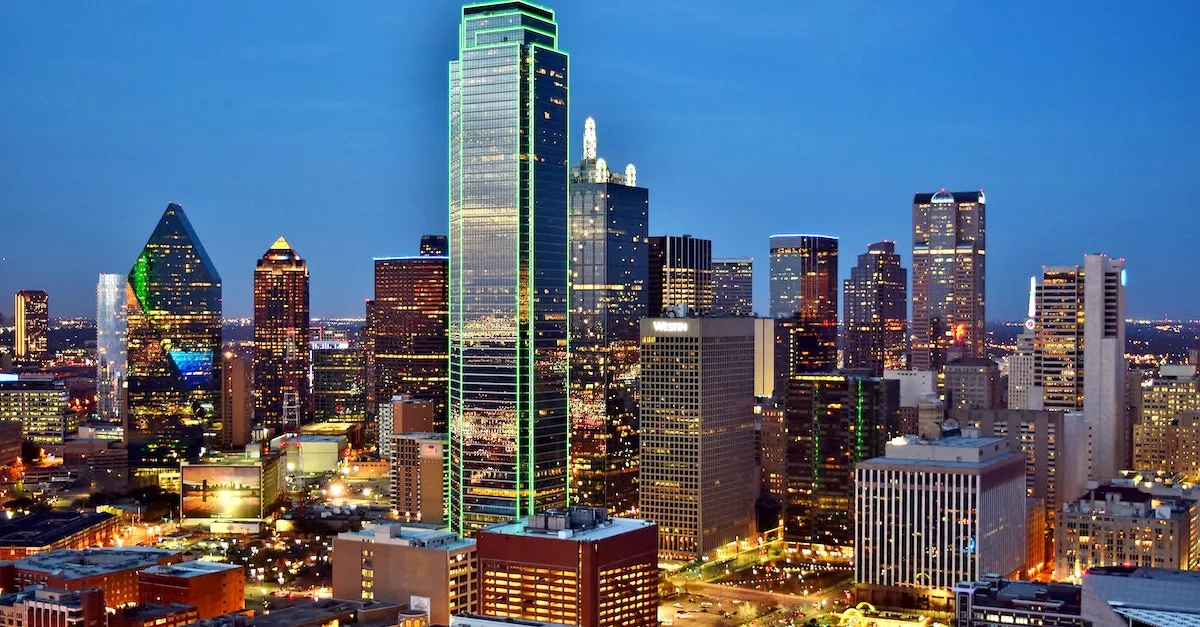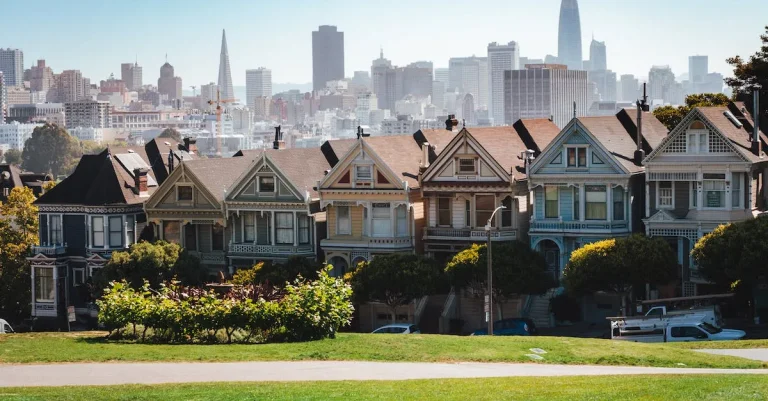Is New York A Megacity?
With over 8 million residents, New York City is one of the largest and most influential urban areas in the world. If you’re short on time, here’s a quick answer: Yes, New York is considered a megacity based on its massive population size and global prominence.
In this comprehensive article, we’ll explore how New York meets the criteria for a megacity including its population, economic power, and cultural footprint. We’ll also look at some of the challenges and benefits that come with being such a vast metropolis.
Population Size and Density
New York’s Current and Historical Population Numbers
New York City, often referred to as the “Big Apple,” is undeniably one of the most populous cities in the world. As of 2021, the estimated population of New York City is over 8.8 million people. This number has steadily grown over the years, with the city experiencing significant population increases since the mid-20th century.
In fact, according to historical data, New York’s population has more than doubled since 1900 when it was around 3.4 million residents.
For more detailed and up-to-date information on New York’s current population numbers, you can visit the official website of the City of New York or refer to the United States Census Bureau’s data.
How Population Size Defines a Megacity
A megacity is typically defined as a city with a population of over 10 million people. While New York City falls slightly below this threshold, it is often considered a megacity due to its immense size and influence.
In terms of population, New York City is the most populous city in the United States and ranks among the top cities globally.
Besides population size, other factors such as economic importance, cultural significance, and urban infrastructure also contribute to the classification of a city as a megacity. New York City excels in all these areas, making it a global hub for finance, commerce, arts, and entertainment.
New York’s Extremely High Population Density
One of the defining characteristics of New York City is its incredibly high population density. With a land area of just over 300 square miles, the city is home to a vast number of people, resulting in a population density of approximately 27,000 residents per square mile.
This high population density can be attributed to the city’s towering skyscrapers, densely packed neighborhoods, and efficient public transportation system. Walking the streets of Manhattan, for example, one can witness firsthand the bustling crowds and the vibrant energy that comes with such a densely populated city.
It is worth noting that New York City’s population density is significantly higher than other major cities around the world. For comparison, Tokyo, often regarded as another megacity, has a population density of around 15,000 residents per square mile.
Economic Power and Prominence
When it comes to economic power and prominence, New York City is undoubtedly at the forefront. Known as the financial capital of the world, it plays a crucial role in global finance, attracting investors, businesses, and professionals from all corners of the globe.
New York as a Global Financial Hub
New York City is home to Wall Street, the epicenter of the American financial industry. It houses the New York Stock Exchange, the largest stock exchange in the world, and numerous major banks and financial institutions.
The city’s financial sector not only fuels the growth of the American economy but also has a profound impact on the global financial landscape. The presence of these institutions and the expertise they offer make New York an undeniable global financial hub.
Contribution to U.S. and World GDP
The economic significance of New York City is reflected in its contribution to both the U.S. and world GDP. According to the Bureau of Economic Analysis, the city’s gross metropolitan product (GMP) was estimated at $1.8 trillion in 2019, accounting for approximately 8% of the U.S. GDP.
This staggering figure demonstrates the immense economic power wielded by New York City. Furthermore, the city’s influence extends beyond the borders of the United States, with its economic activities impacting global markets and economies.
Job Opportunities and Innovation
New York City offers a myriad of job opportunities across various industries, attracting talented individuals from different fields. From finance and technology to fashion and entertainment, the city’s diverse economy provides a fertile ground for innovation and entrepreneurship.
Start-ups and established companies alike thrive in this dynamic environment, fostering creativity and pushing the boundaries of innovation. The city’s vibrant ecosystem encourages collaboration, making it an ideal place for professionals looking to make their mark in their respective industries.
Cultural Influence and Tourism
New York City, often referred to as the cultural capital of the world, has a significant impact on arts, fashion, and media. The city is home to renowned institutions such as the Metropolitan Museum of Art, the Museum of Modern Art, and Broadway theaters, attracting artists, performers, and art enthusiasts from around the globe.
With its vibrant art scene, New York has been a breeding ground for creativity and has inspired countless artists, writers, and musicians.
In addition to its influence on the arts, New York City is a global fashion hub. The city hosts Fashion Week, a biannual event that showcases the latest trends and collections from top designers. It is a platform for both established and emerging designers to showcase their talent and attract international attention.
The city’s fashion industry not only drives the economy but also shapes global fashion trends.
When it comes to media, New York City is home to major television networks, publishing houses, and film studios. The city’s vibrant media industry has produced some of the most iconic television shows, movies, and publications.
From “Friends” and “Seinfeld” to “Sex and the City” and “Gossip Girl,” New York City has served as a backdrop for countless beloved TV shows and movies, further solidifying its cultural influence.
Iconic Sites and Attractions
New York City is renowned for its iconic sites and attractions that draw millions of visitors each year. The Statue of Liberty, a symbol of freedom and democracy, stands tall in the New York Harbor and welcomes visitors from all over the world.
Times Square, with its dazzling billboards and bustling energy, is another iconic landmark that captures the essence of the city that never sleeps.
The city is also home to world-famous landmarks such as Central Park, Empire State Building, and Brooklyn Bridge. Central Park provides a green oasis in the heart of the city, offering a peaceful retreat from the bustling streets.
The Empire State Building, towering over the Manhattan skyline, offers breathtaking views of the city from its observatories. The Brooklyn Bridge, an engineering marvel, connects Manhattan and Brooklyn, offering stunning views of the city and the East River.
Tourism Numbers and Revenues
New York City attracts millions of tourists each year, contributing significantly to its economy. In 2019, the city welcomed a record-breaking 66.6 million tourists, generating an estimated $46 billion in visitor spending.
Tourism plays a vital role in supporting local businesses, creating jobs, and driving economic growth.
The city’s tourism industry is diverse, catering to a wide range of interests and budgets. From luxury shopping on Fifth Avenue to exploring the vibrant neighborhoods of Brooklyn, visitors can experience the city in various ways.
The city’s diverse culinary scene, with its countless restaurants offering cuisines from around the world, is also a major draw for tourists.
With its cultural influence, iconic sites, and thriving tourism industry, it’s no wonder why New York City continues to be a top destination for travelers from all corners of the globe.
Infrastructure and Transportation
When it comes to infrastructure and transportation, New York City is renowned for its extensive and efficient network. The city boasts a robust public transit system, well-connected road networks, and major air and sea travel hubs.
Public Transit Usage and Ridership Numbers
New York City’s public transit system, operated by the Metropolitan Transportation Authority (MTA), is one of the largest and busiest in the world. With a comprehensive network of subway lines, buses, and commuter trains, it serves millions of residents and visitors daily.
The subway, in particular, is the backbone of the city’s transportation system, carrying over 5 million passengers on an average weekday. The MTA also operates an extensive bus network, providing convenient options for getting around the city.
According to recent statistics, the MTA’s ridership numbers for 2019 reached an impressive 2.5 billion trips. This highlights the reliance and popularity of public transit among New Yorkers and reflects the city’s commitment to sustainable and efficient transportation.
Road Networks and Traffic Volumes
New York City’s road networks are intricate and well-developed, facilitating the movement of vehicles throughout the five boroughs. However, due to the city’s dense population and high levels of traffic, congestion is a common issue.
The city’s iconic avenues, such as Broadway and Fifth Avenue, experience heavy traffic volumes, especially during peak hours. Despite this, the city has implemented various initiatives to improve traffic flow, including congestion pricing and the promotion of alternative modes of transportation.
According to a study conducted by the INRIX Global Traffic Scorecard, New York City ranked as the fourth most congested city in the United States in 2019. This highlights the need for ongoing efforts to enhance the road infrastructure and alleviate traffic congestion in the city.
Air and Sea Travel Hubs
New York City is a major hub for both domestic and international travel. The city is served by three major airports: John F. Kennedy International Airport (JFK), LaGuardia Airport (LGA), and Newark Liberty International Airport (EWR).
These airports provide connectivity to destinations around the world, making New York a gateway for global travelers.
In addition to airports, the city is also home to several seaports, including the Port of New York and New Jersey. This bustling port handles a significant amount of cargo and plays a crucial role in facilitating trade and commerce in the region.
For more information on transportation options and updates in New York City, you can visit the official website of the MTA and Port Authority of New York and New Jersey.
Governance and City Planning
Administering a Megacity
Being one of the largest and most populous cities in the world, governing New York City is no small feat. The city is divided into five boroughs, each with its own borough president and a city council member representing each district.
The mayor, elected by the citizens, is responsible for overseeing the entire city administration. The New York City government works tirelessly to ensure the smooth functioning of the city and meet the needs of its diverse population.
Urban Planning Challenges
Managing a megacity like New York comes with a unique set of urban planning challenges. One of the main challenges is addressing the ever-increasing demand for housing. With a population of over 8 million people and limited space, the city needs to find innovative ways to provide affordable housing options for its residents.
Additionally, ensuring efficient transportation infrastructure and reducing traffic congestion are ongoing challenges that require careful planning and investment.
Another important aspect of urban planning in New York City is preserving its rich cultural heritage and historical landmarks. The city has a wealth of iconic buildings and neighborhoods that contribute to its unique identity.
Balancing the need for development and modernization while preserving the city’s character is a delicate task that requires collaboration between city planners, architects, and community members.
Key Initiatives and Investments
In recent years, New York City has undertaken several key initiatives and investments to improve its governance and city planning. One notable initiative is the NYC 2050 plan, which aims to make the city more sustainable, equitable, and resilient in the face of climate change and population growth.
The plan focuses on areas such as affordable housing, transportation, and renewable energy.
The city has also invested heavily in infrastructure projects to enhance transportation and connectivity. The expansion of the subway system, the construction of new bridges and tunnels, and the implementation of bike lanes and pedestrian-friendly streets are just a few examples of these investments.
These initiatives not only improve the quality of life for residents but also attract businesses and tourism to the city.
Furthermore, New York City has embraced technology and data-driven approaches to improve governance and urban planning. The use of smart city technologies, such as data analytics and IoT devices, enables the city to make informed decisions and optimize resource allocation.
This innovative approach has the potential to enhance efficiency and sustainability in various aspects of city management.
Conclusion
In conclusion, New York easily fulfills the criteria of being a megacity based on its massive population of over 8 million people, its standing as a global economic and cultural hub, its vast infrastructure, and the complex governance needed to run such a vast metropolis. While megacities like New York face challenges with resources, housing, traffic, and other issues, these cities drive innovation and prosperity in today’s heavily urbanized world. Clearly, New York remains in an elite class of the world’s supercities.








